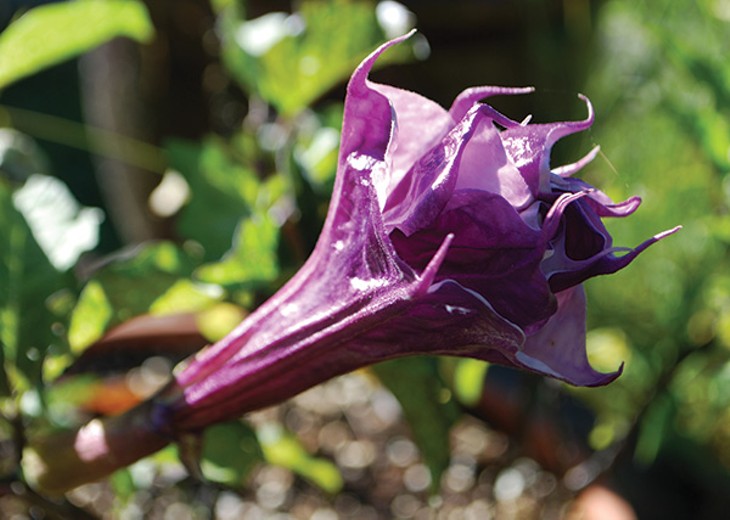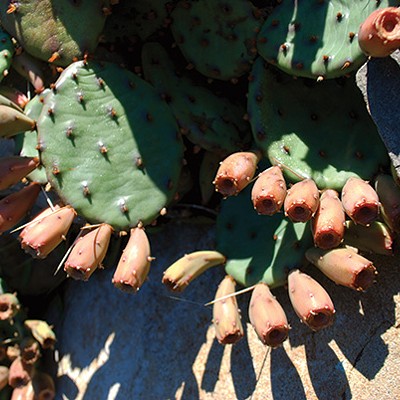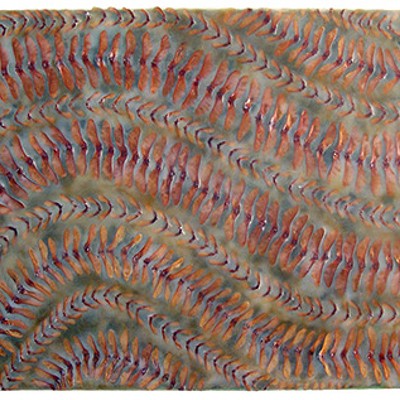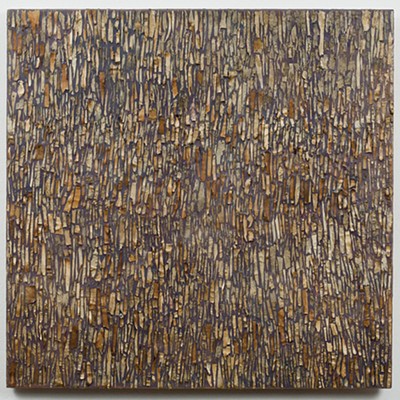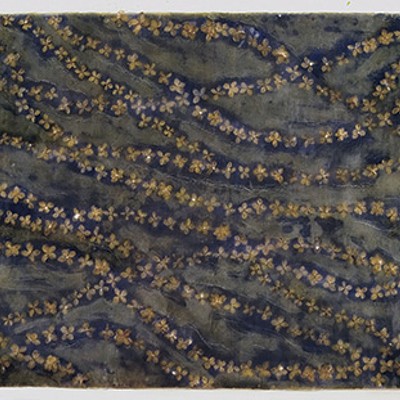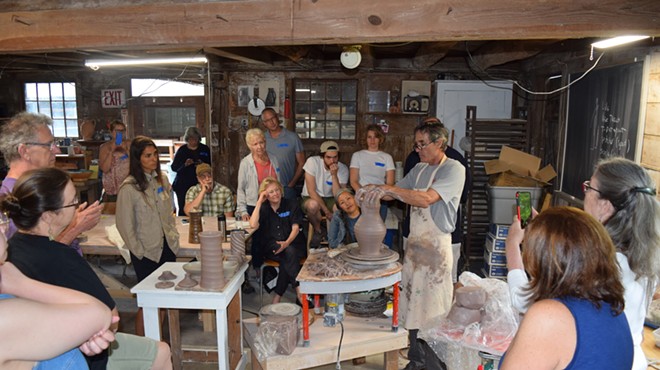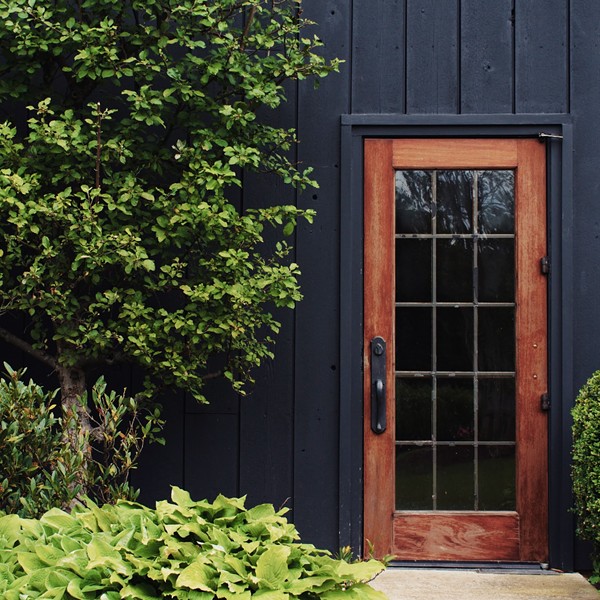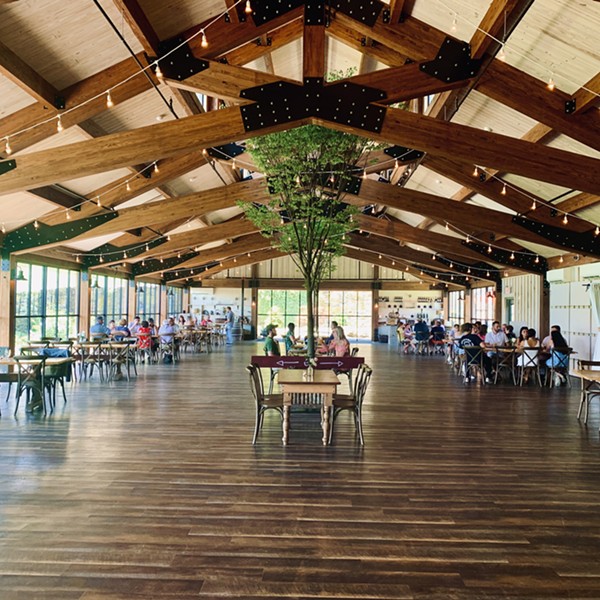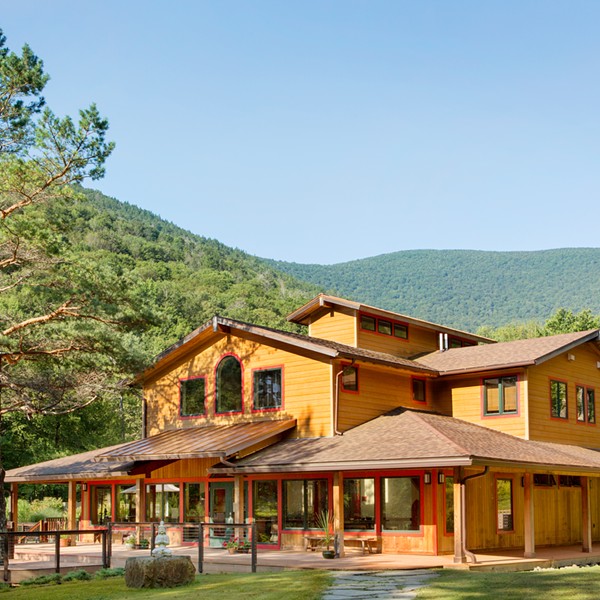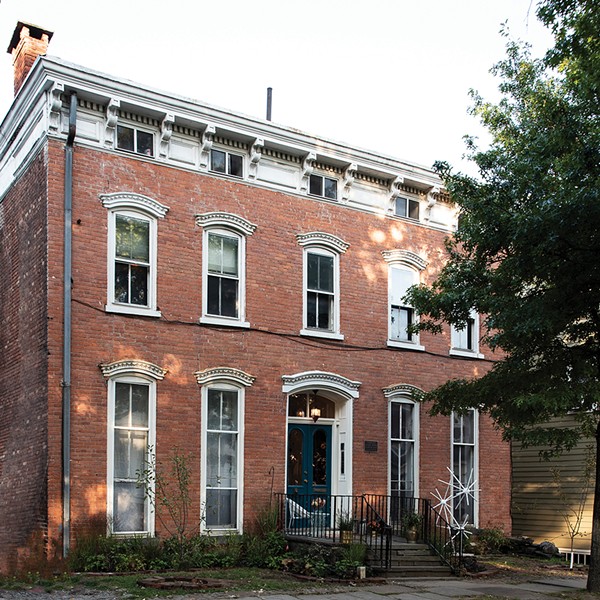
That's also the sense Levy and Serrano wish to convey to visitors to Hortus Conclusus, who can come during open garden days several times each season. Serrano says, "Our goal is for folks to connect with a few new plants, to get excited to try growing new things." The pair, who support their botanical garden through income from their design, consulting, and landscaping business, have been propagating some of these rare and unusual plants to sell on open days.
"We can be a bit overwhelming here because we're not just ornamental, not just edible, not just native," Serrano acknowledges. Indeed, they have amassed one of the most diverse collections of plants to be found in Ulster County. Besides being passionate about edibles, Levy and Serrano grow collections of hardy cacti, pitcher plants and other bog plants, stalwart perennials, and unusual small flowering trees. Because there is so much to see and Levy and Serrano have so much passion and knowledge to impart, more than one visit is in order.
Some Discoveries in the Land of Levy-Serranoana
Hudson Valley home gardeners should try growing and eating medlar, a fruit that enjoyed great popularity during the Middle Ages and tastes like raspberry applesauce.
Medlar is a small tree, thought to be native from southeastern Europe to central Asia, whose fruit, also called medlar, is best eaten after it has been "bletted," or softened, by frost while still on the tree. Levy says, "For years we did it wrong—we'd read that if you picked them and stored them on a soft surface indoors, they would ripen up, but we tried that, and the flavor wasn't good. Now, I come out in December and January and eat them off the tree and like them much better."
Unlike most apple varieties, which require cross-pollination and take 10 years to produce fruit, medlars are self-fertile (one tree is sufficient) and begin bearing fruit after only four to six years. Unlike apple trees, they are easy to grow organically and have few or no pests. They also perform well in a wide range of soils and tolerate drought once they are established.
There is a variety of strawberry called "Seascape" that is tasty, super durable, and bears fruit from spring to fall.
Prickly pear cactus can be scraped clean of its glochids (prickly parts), boiled for 15 minutes, then stir-fried and eaten, like our HC hosts do for their annual Mexican-themed New Year's Eve party. "If you're crazy and want to be eating out of your garden in December," Levy says, "you'll go to that trouble for something that tastes like green beans!" Given good drainage, eastern prickly pear cactus (Opuntia humifusa) is fully hardy in this region and makes a great ground cover. It's not compatible with small kids and pets, however—those glochids sting.
The fruits of our native spicebush, Lindera benzoin, taste like black pepper meets coriander meets cloves, and they make a great spice for mulled apple cider and soups. Serrano calls spicebush "the great neglected, overlooked native food plant of our region." An extra plus: It grows well in shady, wet places.
Sometimes good fruit trees can be found near parking lots. Levy and Serrano already have an extensive collection of plum trees from around the world. "That one was a volunteer I dug up from a parking lot area on a public beach in Long Island," Serrano told me, pointing to a beach plum, fittingly botanically known as Prunus maritima. Native all over the eastern seaboard, beach plums are naturally adapted to dry sites and salt spray. This explains why they are able to survive and even multiply near beach parking lots, and why they are good candidates for tough urban sites generally.
It is easy to amass 50 kinds of sage. And put them all in one large, spectacular bed. Some, like pineapple sage, have culinary uses; others are strictly ornamental, like "Black and Blue," with its arresting royal blue petals and steely black sepals.
In 2014, Levy and Serrano are going to teach an edible landscaping course through Wild Earth, a New Paltz-based nature program. Wildearth.org.
Hortus Conclusus Hortus.biz
The Fine Art of Levy and Serrano Botanicalart.us







